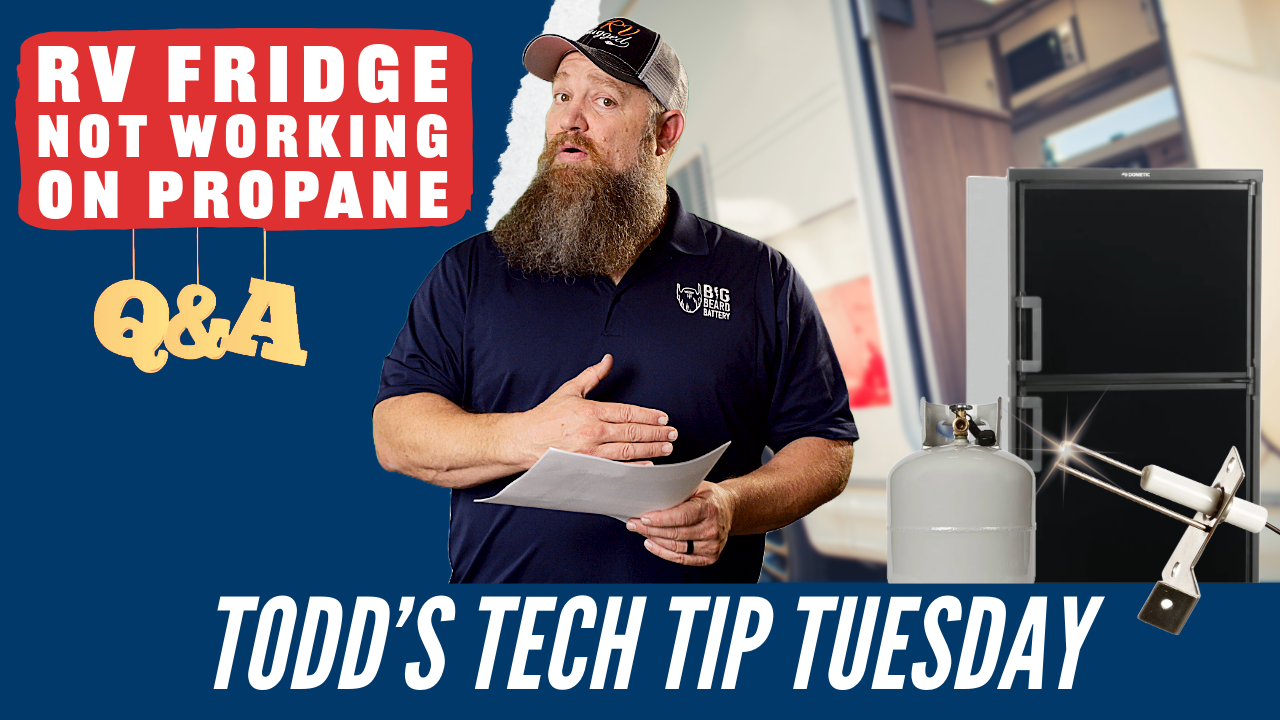Get your RV Technician Certification in as little as 5 weeks!

Welcome back to another edition of Todd’s Two-Minute Tech Tip Tuesday, brought to you by the National RV Training Academy, the largest hands-on RV training school in America. If you’re an RV enthusiast looking to get the most out of your vehicle, you’ve come to the right place!
Question from a Viewer: Troubles with Propane Ignition
This week, we’re tackling a question from one of our viewers, GatorRock20219, who is experiencing some issues with their RV’s Dometic absorption refrigerator. According to GatorRock, the fridge works great on 120-volt power, but when it switches to propane, it’s stubborn about igniting. Despite cleaning the igniter tube and observing a good spark, the ignition fails several times before it finally lights up.
Understanding the Problem
First off, it’s important to understand how the propane ignition system works in an RV refrigerator. The circuit board is designed to detect a flame. When the system attempts to ignite, it opens the solenoid valve to allow propane to flow, while the igniter starts sparking. If the circuit board senses a flame, the solenoid stays open, allowing propane to continue flowing. However, if no flame is detected within a certain timeframe, the solenoid shuts off to prevent propane from leaking. This cycle can repeat several times until the flame is finally established—if at all.
GatorRock mentioned that they’ve confirmed propane flow at the stove. While this is a good start, it doesn’t necessarily mean that the propane is reaching the refrigerator. Different appliances have separate lines, and a kink or blockage in the line to the refrigerator could be the issue.
Steps to Diagnose the Issue
Before jumping to conclusions and replacing parts, it’s crucial to perform a thorough diagnosis. Here are the steps you should follow:
- Check the Solenoid Valve:
- The solenoid valve controls the flow of propane. Intermittent operation could mean the solenoid isn’t consistently opening or closing. If you have my home study series, you’ll know how to test this valve to see if it’s functioning correctly.
- Inspect the Orifice:
- The orifice at the gas valve could be blocked. A blocked orifice would prevent the proper flow of propane, leading to ignition issues.
- Test the Pressure with a Manometer:
- A manometer measures the pressure in the propane line. The correct pressure should be around 11 inches of water column. There’s usually a port on the gas valve where you can connect the manometer to check the pressure. If the pressure is too low, it might not be enough to maintain a flame.
- Observe the Igniter:
- You mentioned seeing a good spark, but make sure it’s happening in the right spot. A cracked igniter could cause the spark to occur in the wrong place, like near the porcelain, rather than where the gas is flowing.
Avoid Replacing Parts Unnecessarily
One thing I always emphasize is not to replace parts without confirming they’re the issue. It’s easy to assume that the propane valve needs replacing, but that could be an expensive mistake if the problem lies elsewhere. By following the steps outlined above, you can narrow down the potential causes and fix the issue without wasting time or money.
Get Registered Today!
Talk to a student advisor to learn more!
